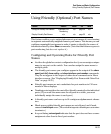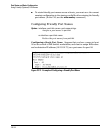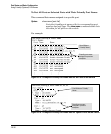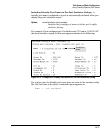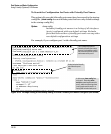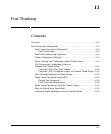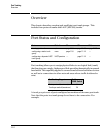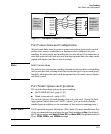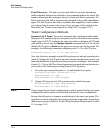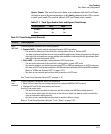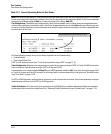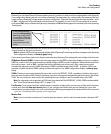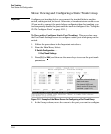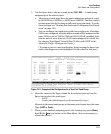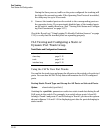
11-3
Port Trunking
Port Status and Configuration
Figure 11-1. Conceptual Example of Port Trunking
Port Connections and Configuration
All port trunk links must be point-to-point connections between the switch
and a router, server, workstation, or another switch configured for port
trunking. No intervening, non-trunking devices are allowed. It is important to
note that ports on both ends of a port trunk group must have the same mode
(speed and duplex) and flow control settings.
Note Link Connections
The switch does not support trunking through an intermediate, non-trunking
device such as a hub, or using more than one media type in a port trunk group.
Similarly, all links in the same trunk group must have the same speed, duplex,
and flow control.
Port Trunk Options and Operation
The switch offers these options for port trunking:
■ LACP (IEEE 802.3ad—page 11-16)
■ Trunk (non-protocol—page 11-23)
The switch supports 24 trunk groups of up to 8 ports each. (Using the Link
Aggregation Control Protocol—LACP—option, you can include standby
trunked ports in addition to the maximum of four actively trunking ports.)
LACP Note LACP operation requires full-duplex (FDx) links. For most installations, Pro-
Curve recommends that you leave the port Mode settings at Auto (the default).
LACP also operates with Auto-10, Auto-100, and Auto-1000 (if negotiation selects
FDx); 10FDx, 100FDx, and 1000FDx settings.
Switch 1:
Ports c1 - c4
configured
as a port
trunk group.
The multiple physical links in a trunk behave as one logical link
port c1
port c2
port c3
port c4
port c5
port c6
port c7
. . .
port n
port a1
port a2
port a3
port a4
port a5
port a6
port a7
. . .
port n
Switch 2:
Ports a2 and
a4 - a6 are
configured as
a port trunk
group



